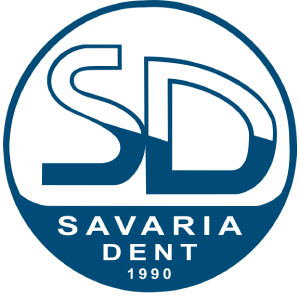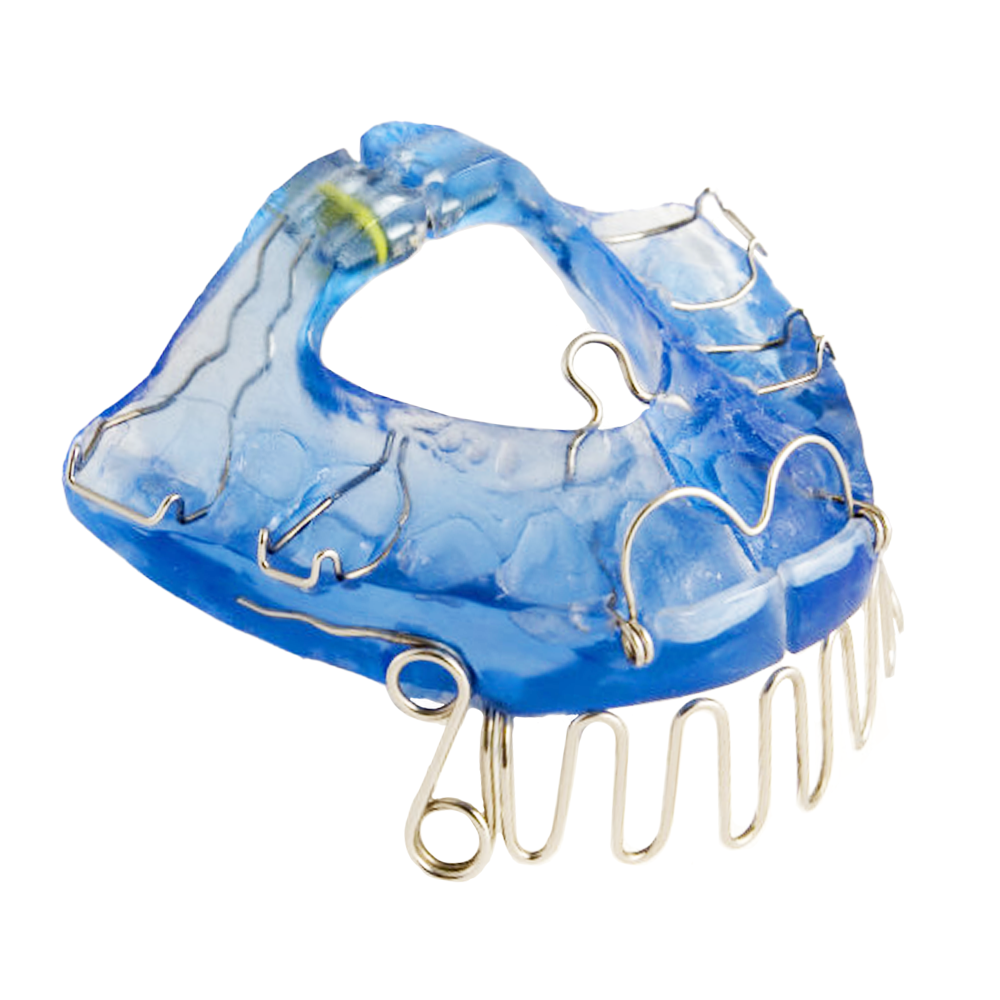Hansa appliance
Bimaxillary devices, mostly for the treatment of distal bite.
Preparation: they are based on models and a construction bite, optional springs, frontal arches, possibly staples should be provided, although the latter reduce the kinetic effect. The acrylate block design should also be provided. By inserting an expansion screw, we can adjust our device to match the expanding tooth arches.
Activation: can be done by means of cutting out and activating the frontal arches or springs, and can be padded with a self-bonding material in the mouth.
Wear time: 10-12 hours per day for one to two years.
Hansa I. Appliance
Indication: for Angle II/1 cases
Mechanism of action: differential expansion of the maxilla with the screw in the posterior region and the connecting omega-shaped loop in the anterior region. Adams clasps and Bass clasp provide good anchorage, limited but we can torque central incisors. By grinding the circular flat burs, we can raise bite and take advantage of the Harvold effect. The lingual plate, which guides the mandible to the anterior position, is connected to the upper part of the appliance by a spring, so that the amount of biting forward can be increased from time to time. The uneven surface of the wire mesh behind the lower lip stimulates increased activation of the lower lip muscles and transfers this force to the maxilla, restraining its growth or changing its direction posteriorly.
Preparation: on plaster models based on a construction bite.
Activation: the lower lingual shield is moved forward from time to time and the flat bite is sanded to achieve the Harvold effect.
Headgear can be attached to the appliance, with a high pull, shorter or longer outer stem to change the direction of rotation of the maxilla.
Hansa II Appliance
Indication: used in Angle II/2 cases.
Mechanism of action: the appliance has a non-framed upper part with a centrally located screw. The upper anterior teeth have a traditional labial arch with a loop spring protruding on the palatal side. These can be differentially activated to adjust the axial position of the upper front teeth.
In all other respects, their use is identical to that of Hansa I.
Hansa III Appliance
The Hansa base plate is located on the upper tooth, well anchored by four Adams clamps and Bass clamps on the central incisors. The front arch is equipped with a helical loop on each side to increase flexibility and curves down in front of the lower incisors. A strong hook is placed on either side of the premolars, into which a Delaire mask can be hooked. Typically, the plate is cut in the oblique direction at the canines and the screw works in the sagittal direction.
Indication: Angle III occlusion of dental or skeletally maxillary origin.
Preparation: on plaster cast, based on a construction bite taken in the most posterior position of the mandible.
Activation: can be activated on the front arch, on the optional springs or by expanding the screws in the appropriate direction. Sanding in the side bite area is not usual.
- type: Bimaxillary Devices

